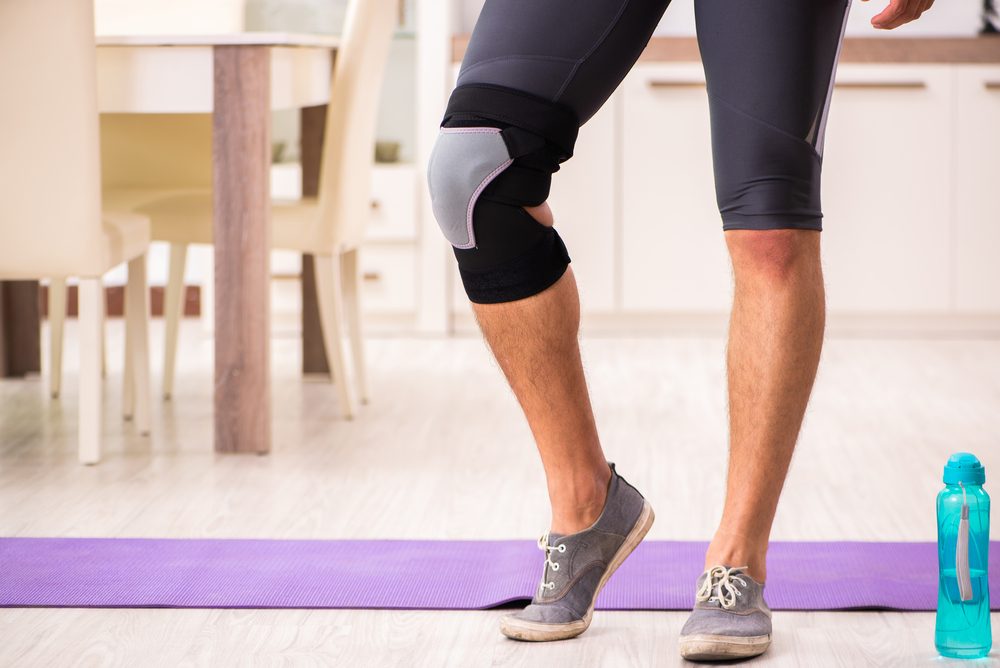Tips to Help You Keep Working Out after an Injury
 Daily exercise is an important part of all-around health. But when you injure yourself, getting in that daily workout can get a lot more difficult. First and foremost, if you’ve been seriously injured, please see your medical care provider to ensure you’re healthy enough to resume exercise without worsening your injury. If you’ve sustained a minor injury, such as a sprain, consider some of these tips to continue your daily workouts while you recover.
Daily exercise is an important part of all-around health. But when you injure yourself, getting in that daily workout can get a lot more difficult. First and foremost, if you’ve been seriously injured, please see your medical care provider to ensure you’re healthy enough to resume exercise without worsening your injury. If you’ve sustained a minor injury, such as a sprain, consider some of these tips to continue your daily workouts while you recover.
Change Your Workouts
While you might have a particular routine you follow with your workouts, an injury may necessitate a change to that routine. For example, if you’ve sprained you’re ankle, high-impact activities like running, playing basketball, or participating in dance aerobics classes like Zumba are not a great idea. Not only can it be quite painful, but if you try to “power through” that pain, you could risk injuring yourself.
Change up your workouts and try something lower-impact that doesn’t strain the injured part of your body. You might try Pilates, water aerobics, spin class, or use the elliptical. Perhaps focus on strength training and utilize cable weights for a while—while, of course, ensuring your movements aren’t causing any pain to your injured body part.
Modify Your Movements
When resuming your workouts—whether you’re trying to go back to old routines or changing it up and trying something new—it’s vital that you pay attention to how your body (and particularly your injured body part) feel during every movement. For example, let’s say you injured your shoulder, and you’ve decided to take a spin class while that joint recovers.
During the class, the instructor may ask you to lean forward on the handlebars, or may even have you perform a reaching and pulling motion to engage your upper body. You attempt to do as instructed, but your injured shoulder instantly twinges. Again, don’t try to just “power through” this. Modify the movement in a way that does not cause you any pain. Or, simply take the movement out altogether and continue pedaling.
Virtually every exercise can be modified in some way to accommodate different levels of fitness and different types of injuries. So, if you’re in a fitness class, don’t hesitate to tell your instructor about your injury, and ask for modifications on certain exercises if you need them. Healing should be your primary focus, even while trying to maintain your overall fitness.
Utilize Braces and Supports
Most minor injuries can be helped through the use of braces, supports, or compression devices. All of these devices perform, more or less, the same function: supporting an injured muscle or joint and removing some of the strain placed on it through daily activity.
Utilizing a compression sleeve to support your injured elbow can allow you to play basketball at a very similar level to what you did before. Slim ankle braces can support a strained Achilles tendon so that you can still attend that Zumba class you love, and participate with a few modifications to reduce the level of impact.
Of course, you should never treat braces and similar devices as a “fix” for a sprain or other injury. Even if utilizing the device greatly diminishes your pain during activity, you are still injured, and you should always proceed with caution when beginning exercise with an injury. However, these can be excellent tools for helping you to maintain a routine of regular activity even after such an injury.
Always Start Slow
No matter how fit you are or how many times you’ve done that exercise before, you should always start slow when exercising with an injury. First, take even more time than you usually would to stretch and warm up. You want to ensure the sprained joint or strained muscle has plenty of time to loosen and lengthen without pushing it too far or too hard.
Then, begin with a lower-impact activity to test out how the injured area feels. If even the lower-impact activities are causing the area pain, then you need to back off and find a different activity that doesn’t utilize the injured body part. If the area isn’t giving you trouble, you can begin to increase your intensity a little at a time. However, try not to push yourself to your usual limits.
A minor injury like a pulled muscle or turned ankle doesn’t have to completely sideline you from your daily workouts. Again, if your injury is serious, you should always seek the treatment and advice of a medical professional. But by utilizing the tips mentioned above, you can continue working out through minor strains and sprains so that you can maintain your physical fitness while still allowing the injured area to heal.
If you need braces, supports, or compression devices to help you work out through your injuries, stop by one of our many Texas locations to view our stock.